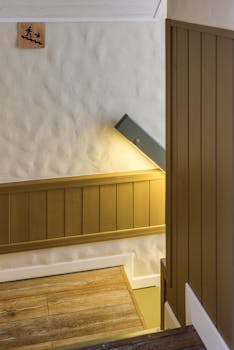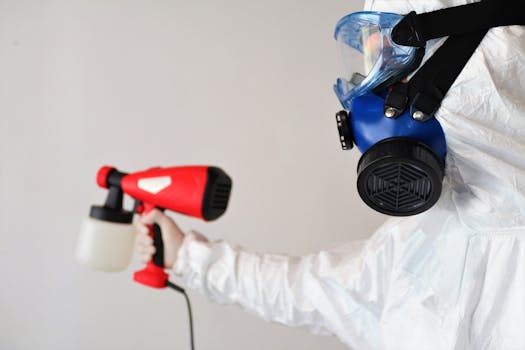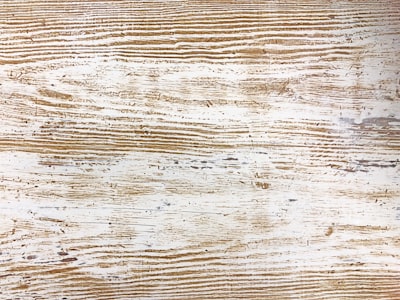Introduction: The Hidden Danger of Mold in Floor Wood
While the warm, rich hues of hardwood flooring can elevate the aesthetic appeal of your home, a hidden danger might be lurking beneath the surface: mold. Mold, an insidious fungus, thrives in dark, moist environments, making the area beneath your flooring an ideal breeding ground if moisture infiltrates your floors. Undetected, this silent intruder not only attacks the integrity of your beautiful hardwood floors but also poses serious health risks for you and your family. This article will guide you through the crucial knowledge about mold in floor wood, its telltale signs, health implications, and effective removal strategies.

Understanding Mold: What Causes Mold on Wood Floors?
You may be wondering, “what causes mold on wood floors?” Mold is a type of fungus that thrives in warm, damp environments and feeds off organic materials such as wood. Mold spores are always present in our environment, but they only become a problem when they find the right conditions to grow and multiply.
The Connection Between Wood and Mold
Wood is a natural material that provides an abundant food source for mold. When combined with warmth and moisture, these factors create an ideal breeding ground for mold. Mold can start to grow on wood surfaces when the moisture content of the wood exceeds 20%. The mold then digests the wood, causing it to decay and disintegrate over time.
Common Causes of Mold in Floor Wood
Mold in floor wood often results from excessive moisture or humidity in your home. This could be due to a leaky pipe, flooding, or simply high levels of humidity in the air. If you live in a humid climate, your hardwood floors may be more susceptible to mold growth.
Another common cause is poor ventilation. Without sufficient airflow, moisture can build up under carpets or in the small spaces between your floorboards, creating an ideal environment for mold growth. Overwatering plants can also lead to water seeping onto your floorboards, which can trigger mold growth if not promptly cleaned up.
Lastly, mold can grow beneath your hardwood floors if they were installed over a concrete subfloor without a proper moisture barrier. Concrete can retain moisture, which can then seep into your wood floors and promote mold growth.
Understanding the causes of mold is the first step towards preventing its growth on your wood floors. In the next sections, we’ll discuss the health risks associated with mold exposure and how to identify signs of mold growth in your home.
The Health Risks: Can Mold Under Floor Make You Sick?
While the sight of moldy wood floors may be unsightly, the true danger lies unseen. Mold, a silent intruder, can pose significant health risks that can affect you and your loved ones. In this section, we delve into these health risks, unmasking the hidden danger beneath your feet.
The Impact of Mold on Health
Mold in your home, especially under your hardwood floors, can be more than just a cosmetic issue. It can lead to multiple health problems, especially for those with allergies or asthma. Mold exposure can cause a myriad of symptoms, ranging from minor irritations to more severe conditions.
A moldy environment may trigger allergic reactions, resulting in symptoms such as sneezing, coughing, watery eyes, and skin irritation. These symptoms might not surface immediately after exposure and could take several days before becoming noticeable. This delayed response often makes it difficult to link these symptoms to mold exposure, making it a silent health hazard.
For individuals with respiratory conditions like asthma, living or working in mold-infested environments can exacerbate their symptoms. The mold spores, when inhaled, can cause wheezing, chest tightness, and shortness of breath.
But even if you don’t have allergies or asthma, mold can still affect your health. Prolonged mold exposure can lead to irritation in your eyes, skin, nose, throat, and even your lungs.
The Toxicity of Wood Mold
Not all molds are created equal. Some molds that grow on wood can be more harmful than others. For instance, Aspergillus—the most common type of mold found on hardwood floors—can cause severe health issues like respiratory illnesses and hypersensitivity reactions.
Another potentially dangerous type is Stachybotrys, often referred to as “black mold.” This mold produces mycotoxins which can lead to severe health problems, including neurological issues and, in rare cases, even death.
Moreover, certain molds can lead to skin conditions like athlete’s foot, organ infections, and nail problems. If you suspect the presence of toxigenic mold on your wooden floors, it’s crucial to act swiftly and seek professional help.
Understanding the health risks associated with mold in floor wood is crucial in protecting your health and maintaining a safe environment at home. In the following sections, we will explore how to identify signs of mold and discuss effective ways to remove and prevent it.
Identifying Mold: Signs of Mold in Floor Wood
The first step in addressing a mold problem is to recognize its existence in the first place. Mold can be a sneaky adversary, hiding in places you’d least expect. In many cases, it lurks beneath your beautiful hardwood flooring, silently causing damage. Here are some key signs that can help you uncover this hidden menace.
Musty Odor and Discoloration
Your senses can play a critical role in detecting mold. One of the initial signs of mold is a musty odor. This scent is similar to what you’d encounter in a damp and closed basement. If you notice this smell, particularly in areas with hardwood flooring, it could indicate mold growth beneath the floorboards.
Another telltale sign is discoloration of floorboards. Mold on wood often manifests as dark spots or stains. However, mold isn’t always black or green; it can come in a variety of colors including white, brown, yellow, and orange. If you see unusual stains, or if the wood color has changed, this could be a sign of an underlying mold problem.
Texture Changes and Warped Floorboards
Mold can drastically alter the texture of your wood flooring. As it grows, it can cause the wood to become fuzzy, powdery, or rough. If your floorboards feel spongy or textured differently than usual, you may be dealing with a mold issue.
Additionally, mold growth can lead to warped floorboards. This is due to moisture trapped beneath the flooring, causing the wood to expand and contract inconsistently. This can result in visible warping or buckling of the floorboards, indicating a potential mold infestation.
Water Stains and Insect Infestations
The presence of water stains is another red flag. These stains are usually lighter or darker than the normal wood color and indicate that water has seeped into the wood – a perfect environment for mold to thrive.
Lastly, insect infestations can indirectly point to a mold problem. Insects are often attracted to damp areas, and their presence could suggest an underlying moisture and mold issue.
Identifying these signs early on can prevent further damage to your hardwood floors and minimize health risks. If you detect any of these indicators, it’s best to call upon professionals like California Flooring & Design to ensure the mold is completely eradicated. In the next section, we will discuss how to remove mold from wood floors effectively and safely.

Removing Mold: Can Mold be Removed from Wood Floors?
Mold, the uninvited guest on your beautiful hardwood floors, can indeed be expelled. The key is to use the right products and methods to ensure that the mold is completely removed without damaging your floors.
The Use of Household Cleaners
If the hardwood floor is correctly sealed, you can wipe up the mold with common household cleaners. Dilute vinegar, soap and water, or even mild bleach can be used as a mold removal solution. However, you need to be cautious and avoid over-saturating the wood, as it may lead to water damage and discoloration.
The Role of Vinegar and Borax
Vinegar, a common household item, is often hailed as a miracle cleaning agent. If used correctly, it can effectively kill mold and prevent its recurrence. However, vinegar should not be used on waxed or unfinished wood as it can cause discoloration. Borax, on the other hand, is a natural mineral that can kill mold and inhibit its growth. Remember to always rinse and dry the area thoroughly after using these products to prevent moisture accumulation.
The Ineffectiveness of Bleach on Wood
While bleach can kill mold on nonporous surfaces, it’s not effective on porous materials like wood. This is because bleach cannot penetrate the surface to kill mold roots. Additionally, if left on the wood for too long, bleach can damage the finish. Therefore, it’s advisable to use other mold removal methods on your hardwood floors.
The Process of Sanding the Wood
Sometimes, when mold has penetrated deep into the wood, more aggressive methods like sanding may be required. Before you start, ensure the room is well-ventilated and you’re wearing appropriate protective equipment. After sanding, the area should be vacuumed thoroughly to remove any residual mold spores. Once the mold is removed, the hardwood floor can be refinished to match the original appearance.
Remember, while these methods can be effective, mold removal can be a tricky process. If you’re unsure or if the mold infestation is extensive, it’s best to seek the help of professionals like California Flooring & Design to ensure the job is done correctly and safely.

Preventing Mold: Tips to Keep Your Hardwood Floors Mold-Free
As the old saying goes, prevention is better than cure. This holds true when it comes to protecting your beautiful hardwood floors from the hidden danger of mold. With some simple actions and a little attention to detail, you can maintain the charm of your hardwood floors while ensuring they stay mold-free.
Enhancing Ventilation and Reducing Moisture
The first step in preventing mold growth on your hardwood floors is to control the humidity levels in your home. Moisture is a mold’s best friend, and it thrives in environments where the humidity is above 60%. You can combat this by enhancing ventilation, especially in areas of your home susceptible to high moisture, such as bathrooms and kitchens.
On humid days, or if you live in a humid climate, consider using a dehumidifier. Opening windows can also promote air circulation, but if the air outside is also humid, this could inadvertently increase moisture levels indoors. Regular checks for any leaks in your plumbing fixtures can also help reduce moisture, as seeping water can travel upwards through flooring material, creating perfect conditions for mold growth.
Regular Cleaning and Maintenance
Just like every other part of your home, your hardwood floors need regular cleaning. And it’s not just about maintaining their shine; consistent cleaning with disinfectants can prevent the accumulation of dirt and organic materials, making your floors less favorable for fungal growth.
A simple solution of water and white vinegar can go a long way in keeping your floors clean and mold-free. Remember to wipe away the solution quickly to avoid soaking the wood, and dry the floor thoroughly afterward. The aim is to remove potential mold sources without introducing additional moisture.
The Importance of Prompt Action
Being proactive is key when it comes to preventing mold on your hardwood floors. If you notice something amiss, such as a musty odor, discoloration, or warping of your floorboards, don’t wait. Investigate the issue immediately and take necessary action. If the problem seems minor, you might be able to deal with it using household cleaning supplies and a bit of elbow grease.
But if the mold has penetrated the wood, or if the problem persists despite your best efforts, don’t hesitate to call in the professionals. A mold infestation can quickly get out of hand if not dealt with promptly, leading to serious health risks and potential damage to your floorboards.
In the end, maintaining hardwood floors that are both stunning and mold-free is all about balance. By controlling moisture, maintaining cleanliness, and acting quickly at the first sign of trouble, you can enjoy the natural beauty of hardwood without worrying about the hidden danger of mold.

Professional Help: When to Seek Assistance from California Flooring & Design
Despite your best efforts, there may come a time when the mold situation in your hardwood floors becomes too overwhelming to handle on your own. In such cases, it’s time to seek assistance from professionals.
The Need for Professional Mold Removal Services
While DIY methods can handle mild to moderate mold growth, severe cases often require professional intervention. Mold can penetrate deep into the wood, making it difficult to remove completely with household cleaning solutions. Furthermore, the infestation can spread beyond the affected area, posing a risk to other parts of your home.
Professional mold removal services have the necessary expertise and equipment to handle such situations. They can thoroughly inspect your home, identify the source of the mold, and devise a comprehensive removal plan. Additionally, professionals can advise on any necessary repairs or replacements for your hardwood floors.
The Benefits of Choosing California Flooring & Design
When looking for professional help, California Flooring & Design stands out as a reliable choice. As a top-rated flooring company in San Diego, they have an exceptional track record in dealing with hardwood floor mold damage. Their team of specially trained professionals can handle even the toughest dirt on any kind of floor and restore its original charm.
Beyond mold removal, California Flooring & Design offers a comprehensive suite of hardwood flooring services, ensuring your floors are installed, cleaned, and maintained to the highest standard. Their commitment to reliability, productivity, and responsiveness makes them the top choice for homeowners in San Diego seeking a reliable hardwood flooring company.
In essence, the fight against hardwood floor mold damage doesn’t have to be a solitary one. With the help of professionals like California Flooring & Design, you can not only restore your hardwood floors but also prevent future mold growth. Remember, a proper response to mold damage today can save you from costly repairs and health risks tomorrow.
Conclusion: Protect Your Home from the Hidden Danger of Mold in Floor Wood
In the heart of every homeowner is the desire to protect their home, a sanctuary where memories are created and cherished. However, the unseen threat of mold lurking in your hardwood floors can swiftly turn your safe haven into a health hazard. This insidious fungus not only mars the beauty of your hardwood flooring but also poses serious health risks, from respiratory illnesses to skin irritations.
A proactive approach is key to battling against this silent invader. Early detection of telltale signs such as musty odor, discoloration, and warped floorboards can help nip the problem in the bud. Regular cleaning and maintenance, coupled with the use of dehumidifiers and proper ventilation, can significantly lower the chances of mold growth in your home.
Yet, despite your best efforts, there are times when the mold infestation is too extensive or stubborn for home remedies. That’s when it’s time to call in the experts. At California Flooring & Design, we understand the importance of a healthy and safe home environment. Our team of skilled professionals are equipped with the knowledge and tools to effectively remove mold from your wood floors. We also offer reliable advice on preventing future mold infestations, ensuring your floors stay pristine and your home remains a safe place for you and your loved ones.
In conclusion, the hidden danger of mold in floor wood is not to be underestimated. However, with the right preventive measures and timely intervention, you can protect your home and keep your hardwood floors looking their best for years to come. After all, your home deserves nothing less.




